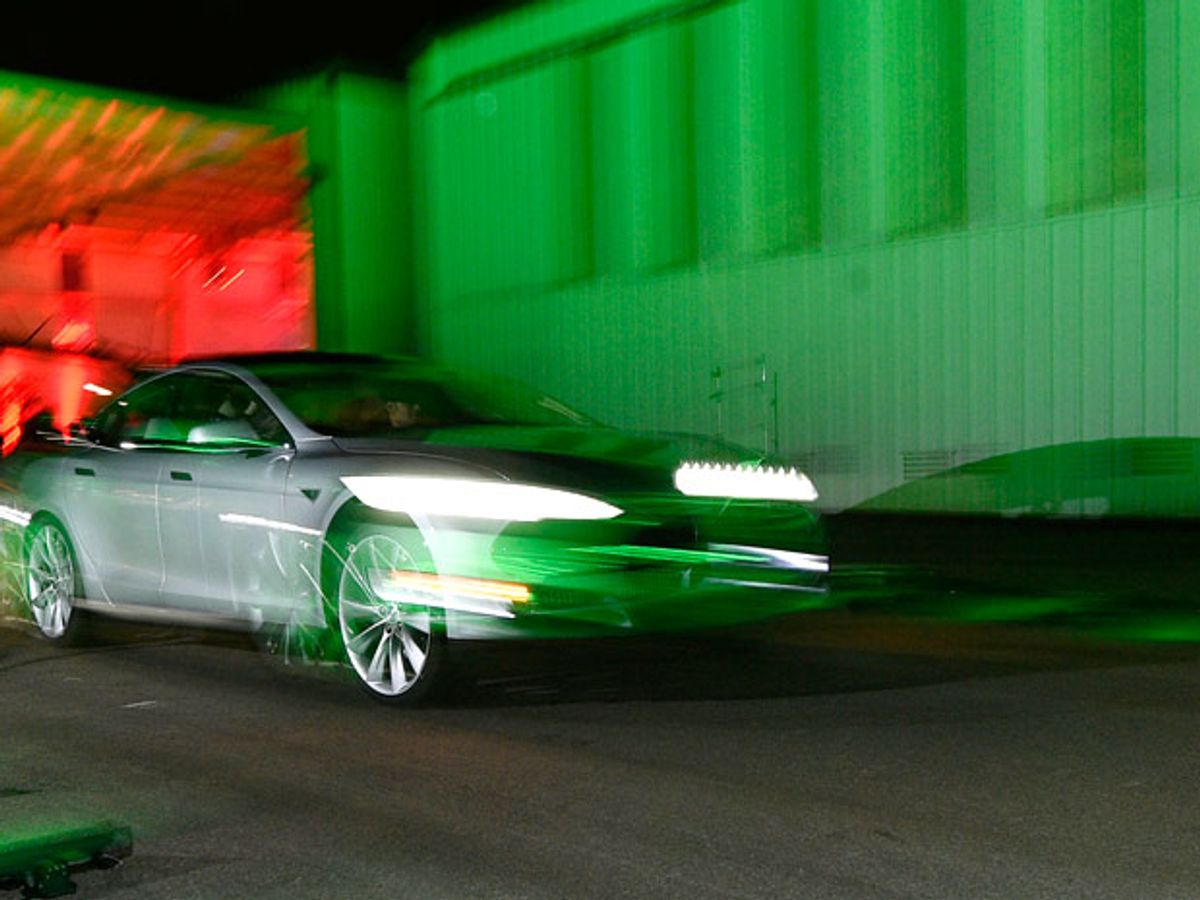Elon Musk's much-anticipated announcement last night turned out to be less about self-driving capability and more about good, old-fashioned oomph. The Tesla Model S will offer four-wheel drive with a second motor for the extra axle. Musk said that this gets the car from zero to 60 miles per hour (that is, to 97 kilometers per hour) in 3.2 seconds. That’s supercar territory.
It’s also Thinking Cars territory, because the all-electronic drive juggles torque between the front and back wheels from one millisecond to the next, improving both the car’s grip on the road and its energy efficiency. The updated model will go 443 km (275 miles) on a charge, up 3.7 percent from the standard model.
On the other hand, the car’s self-driving capability—the feature the auto press expected to be the main news—turns out to be just an echo of what Mercedes-Benz already offers in its S Class. Like the Mercedes flagship, the Tesla will have forward-looking radar, cameras that recognize stop signs, and systems that use sensor data to keep the car in its lane and to avoid headlong crashes.
After a prolonged tease from a showman like Musk, we expect more. Tesla has merely become the next in a line of automakers that say they, too, will eventually catch up with Mercedes. Volvo plans a similar degree of autonomy in two years, Nissan and Audi in roughly four.
But Musk did give us two interesting nuggets.
First, every Tesla car will come with self-driving equipment—something no other manufacturer does. To be fair, it’s fairly easy for a niche player like Tesla. The old General Motors may have had a car for “every purse and purpose,” but Tesla will settle for every prince and potentate. At least for now.
Second, the cars will pack sonar, a.k.a. ultrasound range finding. This one is unusual because Musk appears to be talking about something beyond the cheap, compact devices other auto makers now salt around their cars. Those sensors mostly function as aides to close-in work, like self-parking, and as backups to the front- and rear-looking radars. The Mercedes S Class, for instance, has 12 of them, with ranges under 5 meters.
But Musk says that his ultrasound system is “long-range” and offers “360 degree” coverage. He adds that it “establishes a protective cocoon around the car. It can see anything: a small child, a dog. And it can operate at any speed.”
Every self-driving car needs many senses. Musk ticks off four: radar, cameras, sonar and GPS. Eventually there will be a fifth: information channeled from other cars and from the road itself.
Philip E. Ross is a senior editor at IEEE Spectrum. His interests include transportation, energy storage, AI, and the economic aspects of technology. He has a master's degree in international affairs from Columbia University and another, in journalism, from the University of Michigan.



